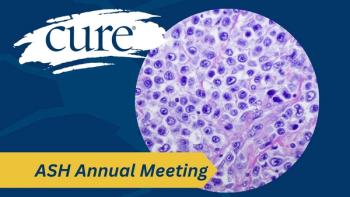
FDA Approves Single-Dose Emend for Injection for CINV
The approval is primarily based on the phase 3 MK-0517-031 study, in which adding single-dose Emend for injection induced a complete response in nearly 80 percent of patients receiving MEC.
The FDA approved single-dose Emend for injection (fosaprepitant dimeglumine) in combination with other antiemetic agents for the prevention of delayed chemotherapy-induced nausea and vomiting (CINV) following moderately emetogenic chemotherapy (MEC), according to Merck, the developer of the drug.
The approval is primarily based on the phase 3 MK-0517-031 study, in which adding single-dose Emend for injection to ondansetron and dexamethasone induced a complete response (CR) during the delayed phase (25 -120 hours after treatment initiation) in nearly 80 percent of patients receiving MEC. The CR rate with Emend for injection was about 15 percent higher than the rate with ondansetron and dexamethasone alone.
“Despite significant advances in supportive care, nausea and vomiting has remained a challenge for many cancer patients undergoing moderately emetogenic chemotherapy and has historically required multiday antiemetic therapy,” Stuart Green, vice president of Clinical Research at Merck Research Laboratories, said in a statement. “Today’s approval of an expanded indication for Emend for injection means that physicians now have a new single-dose intravenous option, combined with other antivomiting medicines, for the prevention of delayed nausea and vomiting in these patients.”
In the pivotal, randomized double-blind MK-0517-031 trial, 1000 patients receiving MEC were randomized in a one-to-one ratio to Emend for injection as a single IV infusion combined with ondansetron and dexamethasone (502 patients) or the control regimen of ondansetron and dexamethasone alone (498 patients). On day 1, patients received 150 mg of Emend for injection or placebo, along with ondansetron and dexamethasone. Patients in the control arm received ondansetron on days 2 and 3.
Patients were scheduled to receive IV treatment with at least one MEC agent when beginning treatment. Overall, baseline characteristics were well balanced between the two study arms. The majority of patients were female, Caucasian, and aged 50 years or older.
The primary endpoint was complete response (no vomiting and no use of rescue therapy) in the delayed phase. Secondary endpoints included CR in the overall (0 to 120 hours after starting MEC) and acute (0 to 24 hours after starting MEC) phases, and no vomiting in the overall phase.
In the delayed phase, patients in the Emend for injection arm had a 78.9 percent CR rate compared with 68.5 percent in the control arm. The CR rate was also significantly improved in the overall phase. However, in the acute phase, there was not a significant CR rate improvement at 93.2 percent versus 91.0 percent, respectively.
In the overall phase, the rate of individuals with no vomiting was 82.7 percent in the Emend for injection arm versus 72.9 percent in the control arm. The rate of patients without significant nausea was also improved with Emend for injection at 83.2 percent versus 77.9 percent with ondansetron and dexamethasone alone.
The safety profiles were similar between the Emend for injection and control arms. All-grade adverse events were reported in 8.5 percent and 9.1 percent of the Emend for injection and control arms, respectively. There were no reported cases of severe infusion-site pain, erythema, or induration. Three patients receiving Emend for injection had infusion-site thrombophlebitis compared with no patients in the control regimen.
The most frequently occurring adverse events in the Emend for injection versus the control arm were fatigue (15 percent vs 13 percent), diarrhea (13 percent vs 11 percent), neutropenia (8 percent vs 7 percent), asthenia (4 percent vs 3 percent), anemia (3 percent vs 2 percent), peripheral neuropathy (3 percent vs 2 percent), leukopenia (2 percent vs 1 percent), dyspepsia (2 percent vs 1 percent), urinary tract infection (2 percent vs 1 percent), and pain in extremity (2 percent vs 1 percent).
Emend for injection is an IV prodrug of the oral agent aprepitant, an NK1 receptor antagonist. When injected, Emend for injection rapidly converts to aprepitant.
In 2008, the FDA initially approved Emend for injection as part of a three-day combination regimen with other antiemetic agents for the prevention of acute and delayed CINV following MEC or highly emetogenic chemotherapy. The original approved regimen included 115 mg of Emend for injection on day 1 and 80 mg of aprepitant on days 2 and 3, along with a corticosteroid and a 5-HT3 antagonist.
Weinstein C, Jordan K, Green SA, et al. Single-dose fosaprepitant for the prevention of chemotherapy-induced nausea and vomiting associated with moderately emetogenic chemotherapy: results of a randomized, double-blind phase III trial. Ann Oncol. 2016;27(1):172-178.





